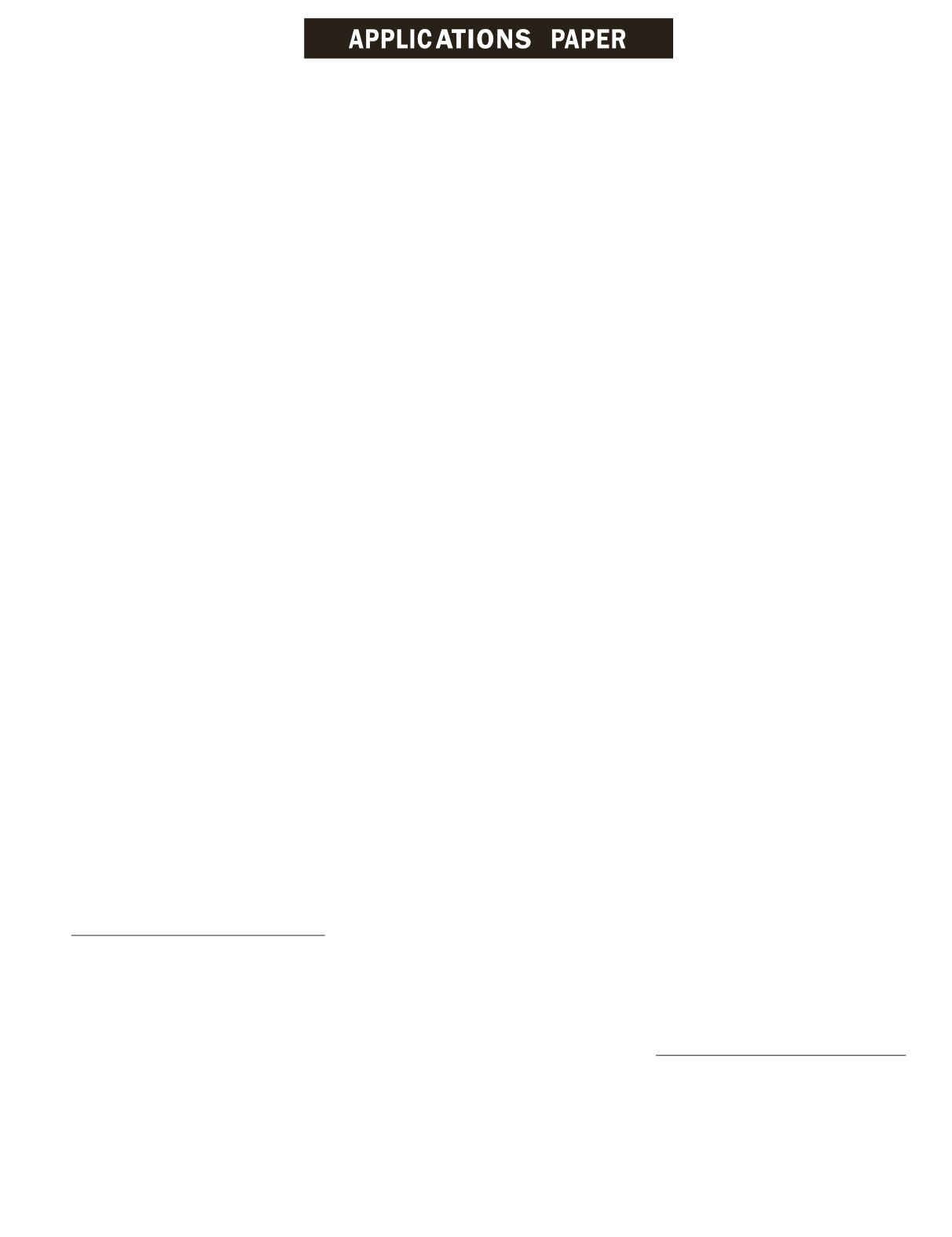
Small Landslide Susceptibility and Hazard
Assessment Based on Airborne Lidar Data
Omar E. Mora, Jung-kuan Liu, M. Gabriela Lenzano, Charles K. Toth, and Dorota A. Grejner-Brzezinska
Abstract
Landslides are natural disasters that cause environmental
and infrastructure damage worldwide. To prevent future risk
posed by such events, effective methods to detect and map
their hazards are needed. Traditional landslide susceptibil-
ity mapping techniques, based on field inspection, aerial
photograph interpretation, and contour map analysis are
often subjective, tedious, difficult to implement, and may not
have the spatial resolution and temporal frequency neces-
sary to map small slides, which is the focus of this investiga-
tion. We present a methodology that is based on a Support
Vector Machine (
SVM
) that utilizes a lidar-derived Digital
Elevation Model (
DEM
) to quantify and map the topographic
signatures of landslides. The algorithm employs several
geomorphological features to calibrate the model and delin-
eate between landslide and stable terrain. To evaluate the
performance of the proposed algorithm, a road corridor in
Zanesville, Ohio, was used for testing. The resulting landslide
susceptibility map was validated to correctly identify 67 of
the 80 mapped landslides in the independently compiled
landslide inventory map of the area. These results sug-
gest that the proposed landslide surface feature extraction
method and airborne lidar data can be used as efficient tools
for small landslide susceptibility and hazard mapping.
Introduction
The hazards of natural disasters occur from processes of the
earth and cause damage, devastations, loss of life, and envi-
ronmental change. One particular natural hazard of interest
known to cause economic, human and environmental damage
worldwide are landslides (Glenn
et al.
, 2006). Landslides
have consistently damaged human infrastructure and have
impeded the daily lives of many. They have a broad range of
geologic processes that cause the downward movement of
mass over spatial and temporal scales (McKean and Roering,
2004). In addition, their effects have a strong dependability
on their spatial pattern of incident, rate of recurrence, and
amount of movement (McKean and Roering, 2004). Their
hazards are well-understood, yet current methods of identi-
fying and assessing their conditions are inefficient, and are
difficult to predict. Existing techniques are typically based on
field inspection, aerial photograph interpretation, and contour
map analysis (Booth
et al.
, 2009). However, these methods
have limitations that reduce the accuracy, completeness and
reliability necessary to map landslides with high probabil-
ity, especially, small failures where mass movement rates
are slower (Booth
et al.
, 2009; Galli
et al.
, 2008). Addition-
ally, many sites are not easily accessed for field inspections.
Highly vegetated areas present difficulties for both on-site
inspections and aerial photographic interpretation. Historical
contour maps do not have the resolution necessary to map
small landslides in highly vegetated areas where conventional
remote-sensing methods cannot penetrate the land cover (Van
Den Eeckhaut
et al.
, 2005; Booth
et al.
, 2009; James
et al.
,
2012). For these reasons, traditional methods are not cost-
effective and a new approach to landslide susceptibility and
hazard mapping is necessary.
Remote-sensing technology has seen large advances in
the past decade, in cost, accuracy, and accessibility. One of
the major improvements has been the spatial resolution of
Light Detection and Ranging (lidar) technology. In earlier
stages only coarse nominal point spacing (>10 meters) was
available. Improvement of this technology has allowed for
higher spatial resolutions (<1 meter). The increase made in
spatial resolution provides mapping opportunities at remark-
able scales. This tool provides the accuracy necessary to map
surface models precisely (Shan and Toth, 2008; Jaboyedoff
et al.
, 2012). Furthermore, it has the potential to overcome
many challenges faced in landslide susceptibility mapping,
for example, the spatial resolution, broad terrain coverage and
accuracy necessary to map precise surface models. A par-
ticular lidar technology capable of overcoming the aforemen-
tioned challenges is airborne lidar. This instrument is capable
of penetrating vegetation, mapping areas up to thousands
of square kilometers (Shan and Toth, 2008; Guzzetti
et al.
,
2012), and providing sub-meter spatial resolutions. For these
reasons, it is a prime consideration.
Previous landslide susceptibility mapping techniques
revealed the potential that remote-sensing technology pre-
sented to identify and map the geomorphic features related to
landslide morphology (McKean and Roering, 2004; Glenn
et
al.
, 2006; Booth
et al.
, 2009). However, their focus has been
on mapping large landslides in hilly terrain and mountainous
regions, along coastal bluffs, and river basins (e.g., Van Den
Eeckhaut
et al.
, 2005; Booth
et al.
, 2009; Ballabio and Sterlac-
chini, 2012; Tien Bui
et al.
, 2012). Less attention has been
paid to map small failures, which impact our transportation
networks. Small failures have been overlooked in previous
Omar E. Mora, Charles K. Toth, and Dorota A. Grejner-
Brzezinska are with the Department of Civil, Environmen-
tal and Geodetic Engineering, The Ohio State University,
470 Hitchcock Hall, 2070 Neil Ave., Columbus, OH 43210
(
).
Jung-kuan Liu was with the Department of Civil, Environ-
mental and Geodetic Engineering, The Ohio State University,
Columbus, OH 43210, and currently with the CSS-Dynamac/
National Operations Center, Bureau of Land Management,
Denver Federal Center, Building 50, Denver, CO 80225.
M. Gabriela Lenzano is with the International Center of Earth
Sciences (ICES), UNCuyo-CONICET, Ciudad Universitaria,
Mendoza, Argentina.
Photogrammetric Engineering & Remote Sensing
Vol. 81, No. 3, March 2015, pp. 239–247.
0099-1112/15/813–239
© 2014 American Society for Photogrammetry
and Remote Sensing
doi: 10.14358/PERS.81.3.239
PHOTOGRAMMETRIC ENGINEERING & REMOTE SENSING
March 2015
239


